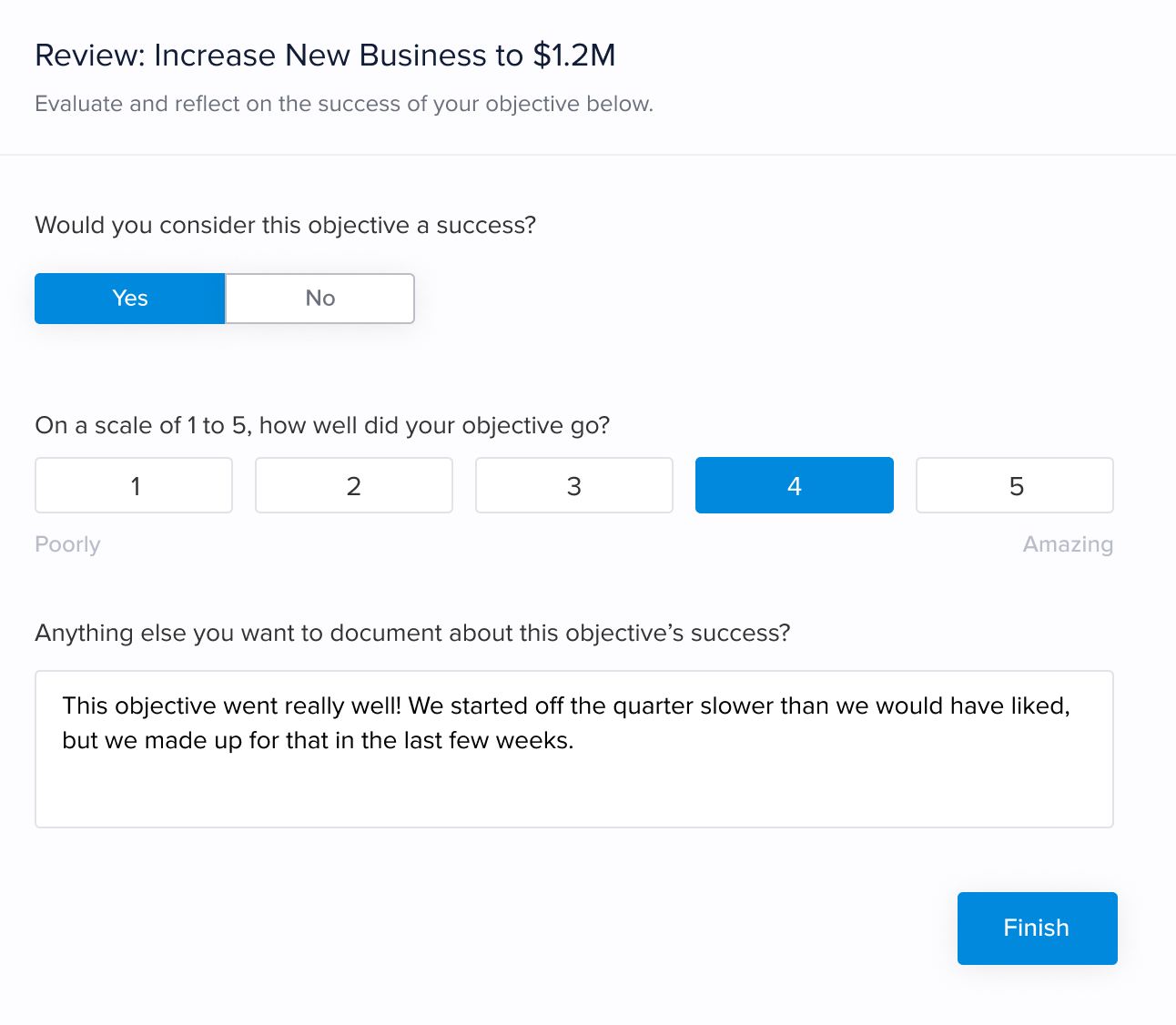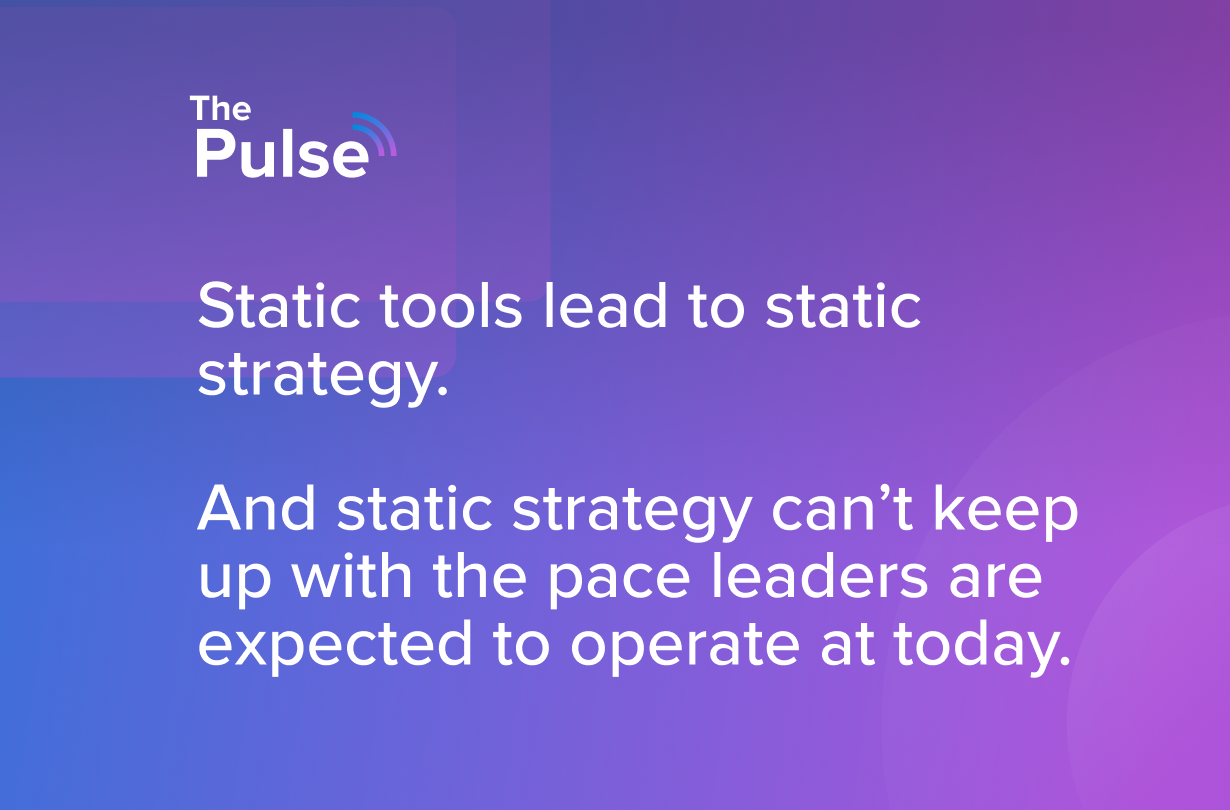
As we head into the fall, many companies are starting to prepare for Q4 and 2022 strategic planning. For a number of these companies, they've adopted a goal-setting framework to guide their growth and measure the performance of initiatives across the business. Here at Elate, we get to work with companies that have implemented a number of different frameworks, such as OKRs, EOS, 4Dx, and V2MOM, to name a few.
With goal-setting frameworks becoming more common in today's high growth businesses, one framework in particular that has been widely-adopted is the OKR methodology.
There are a lot of misconceptions about OKRs, and this has led many companies to experience challenges with OKRs they weren't expecting. Although strategy and operations leaders may have spent a good amount of time researching OKR best practices, we've found that often these best practices are more focused on the tactical use of OKRs. Practices that include:
- How to Write OKRs
- How to Set OKRs
- How to Report on OKRs
- How to Implement OKRs
As we've written about in the past, all of these are critical OKR best practices in tactically leveraging an OKR framework. However, for as much as has been written on the tactical use of OKRs, often overlooked are the strategic OKR best practices that start well before the process of writing, setting, reporting, and even implementing OKRs.
Today, we wanted to focus on some of the high-level OKR best practices that are often overlooked.
Aligning Around Your Strategic Vision
Far too often we see strategy and operations leaders fall into the trap of letting an OKR framework overtake the entire strategic planning process.
OKRs are a great means for how your company can set, measure, and review goals in relation to the overall plan you are building to meet long-term goals. However, many of the OKR criticism we hear ties back to companies getting so focused on setting perfect quarterly objectives, that they lose sight of the bigger picture.
Too often the urge for strategy and operations leaders is to start building and executing against OKRs, rather than using the introduction of OKRs or a new OKR planning session as a way to revisit the long-term vision of the company.
This is why we recommend companies spend time in every annual offsite first revisiting the 3, 5, and 10 year vision for the company. This helps not only reaffirm the company's current path, but it also helps shape what we call annual themes. These themes often take the form of sales, customer success, new product, or even cultural goals that you have for the year. They also help inform how OKRs are built across every level of the company.

Additionally, by reinforcing the long-term vision and annual themes that every objective points towards, you are helping to proactively counter another one of the pros and cons of OKRs, which is a lack of employee buy-in or adoption.
Too often employees are asked by executives to simply take up yet another software without understanding the actual value or impact their actions have for the company.
Rather than simply pushing more OKR examples or another OKR template on employees with the hope that this time it will stick, instead, ask whether or not your company has effectively communicated why OKRs are being used throughout the company and how every single OKR has a significant impact on the company reaching their long-term goals.
This all begins by ensuring leadership is aligned on the direction of the company from the start.
Keeping the Momentum of OKRs Between Quarters
When a company makes the collective decision to implement a goal-setting framework, such as OKRs, there is often an air of excitement that helps carry the momentum of successfully standing up OKRs across the company. While some employees might prefer other alternatives to OKRs, the reality is that often a framework like OKRs is so badly needed at the organization that leadership and employees are excited for the opportunity to add structure to the chaos of a high growth company.
However, that initial excitement can quickly fade, and the momentum of first implementing a framework slows. What was originally excitement and optimism around a framework for creating alignment, driving collaboration, and empowering employees is being drowned out by the short-term pain of day-to-day work. And after only a quarter or two of doing OKRs, leaders might start to doubt the overall value.
Far too often we see these doubts start to creep in as the current quarter comes to a close and the next quarter looms ahead. Not only do leaders face the potential struggle of pushing employees to close out their current objectives, but they are also tasked with the challenge of communicating next quarter's goals and ensuring employees set new OKRs for the coming quarter.
This transition from one quarter to the next is a critical moment in your company's use of any goal-setting framework. And for far too many companies, they aren't set up for success in how they go about executing this transition.
If the pain of transitioning from one quarter to the next is so great that it is worth potentially scrapping your goal-setting framework, then we would recommend getting back to the basics of why you decided to implement a framework in the first place.
At Elate, we believe in two key concepts as it relates to strategic planning and OKRs:
1. For Employees: radically simplify the process of providing updates and surfacing challenges.
2. For Strategy and Operations Leaders: provide powerfully simple insights to drive better decision making.
These two principals couldn't be more applicable than during the quarterly OKR transition.
So often we focus on how simple we can make the process of measuring OKRs or even standing up an OKR dashboard for tracking updates. While these are key components for success, and areas we've focused on at Elate, the same can be said for how you should review, close, and create new OKRs.
For employees, we've focused on streamlining the process of closing OKRs by simplifying the process. Whether through our integration with Slack or directly from the platform, Employees are asked three simple questions:
1. Would you consider your objective a success?
2. On a scale of 1 to 5, how well did the objective go?
3. Anything else you'd like to document about this objective?
Simple, smooth, and powerful in the information provided.

With this close out process, we are surfacing real-time insights to strategy and operations leaders, not only on current quarter performance, but in the information that can be leveraged in building future OKRs across the business.
With reports, such as our Objective Success Report, Elate is unifying data across every layer of the business for strategy and operations leaders to better understand what’s working and what’s not. From how many OKRs an employee should own to what the ideal number of OKRs should be by department for successful outcomes, these are the insights that help increase effectiveness for strategy and operations leaders.
Similar to the process of closing out objectives, we’ve focused on streamlining how leaders plan for next quarter’s objectives.
With Elate's Planning Feature, strategy and operations leaders can now easily manage the creation, review, and finalizing of OKRs across every team. Rather than trying to compile dozens of different spreadsheets or allowing employees to have free rein on creating OKRs, strategy and operations leaders can now easily move across all areas of the business to ensure every team member creates OKRs that align with the overall company objectives.
Elate’s Planning Feature also allows strategy and operations leaders to easily identify which company OKRs aren't supported enough or which team members might own too many OKRs.
This reporting and visibility is unique to Elate, because we don't view our solution as an OKR warehouse. Too often we see companies that have unsuccessfully implemented OKR tools where employees simply dumped objectives, never to revisit them again until the next quarter.
The process of transitioning OKRs from quarter to quarter has to be radically simple, yet powerful.
Elate: More than an OKR Tool
In understanding OKRs meaning and purpose within your organization, strategy and operations leaders can maximize the value of a goal-setting framework in a way that drives growth. However, this means thinking of OKRs as more than just a silver bullet to fix the chaos and challenges that come with scaling a company.
OKRs are a key component of success, but they are only part of the overall strategic planning process for companies.
Strategic Planning encompasses four parts: Vision, Planning, Execution, and Review. And for too many companies, they only look to solve one part of this strategic lifecycle. That's why we built Elate.
Elate is the leading Strategic Planning software built to help high growth companies communicate their vision, create alignment, and track performance all in one place. As more than just an OKR tool, we look to unify the complete strategic process for companies in a way that accelerates growth and provides sustainability.
If you're interested in learning more about how we are working with today's leading strategy and operations leaders to successfully implement OKRs within their operating framework, let us know how we can help! We'd love to share more.


